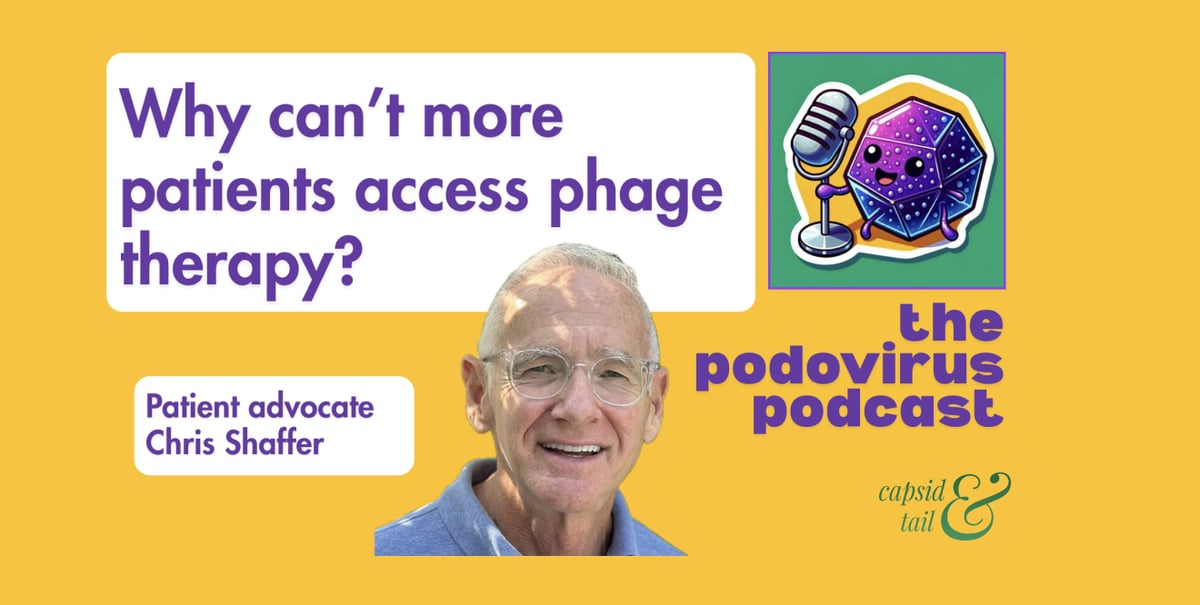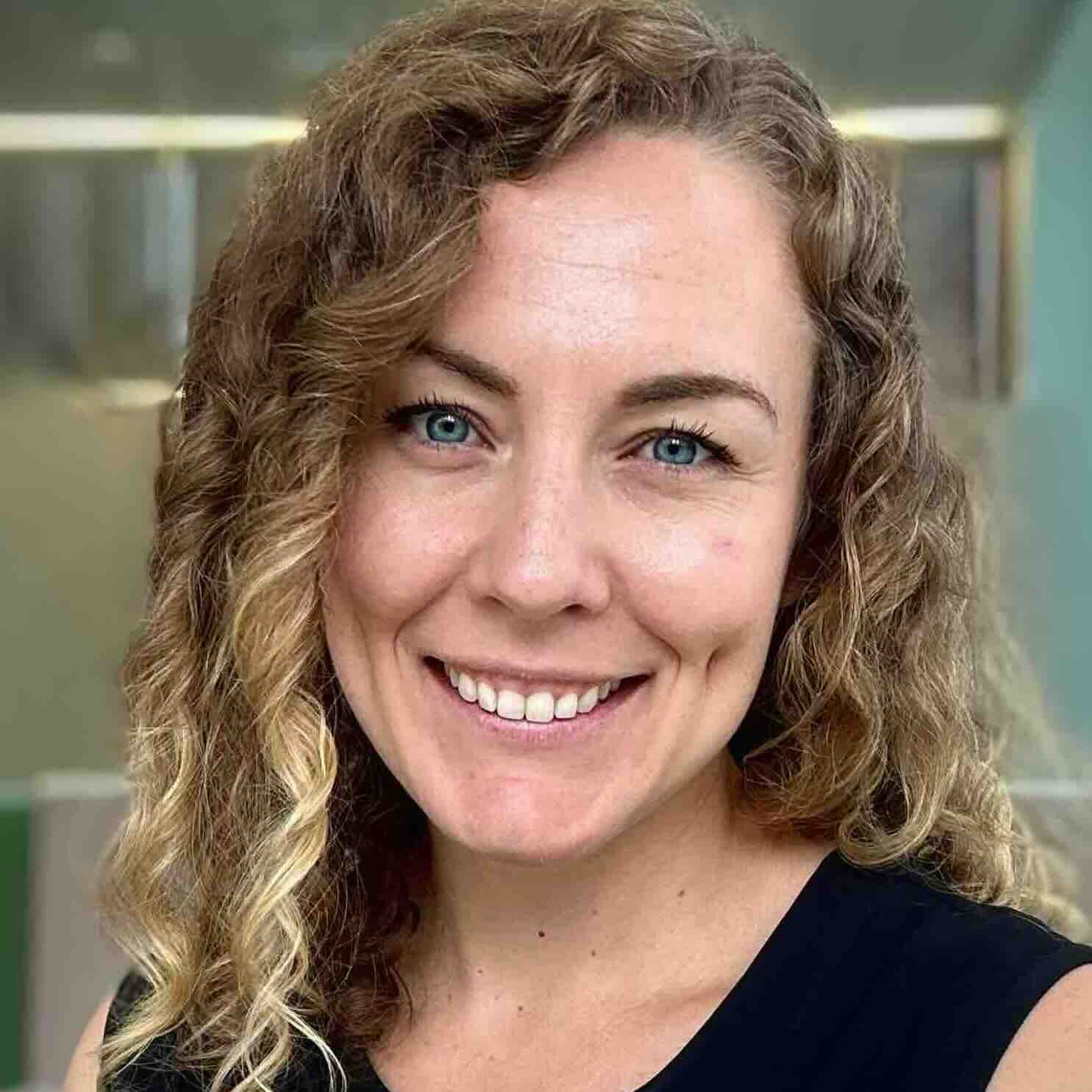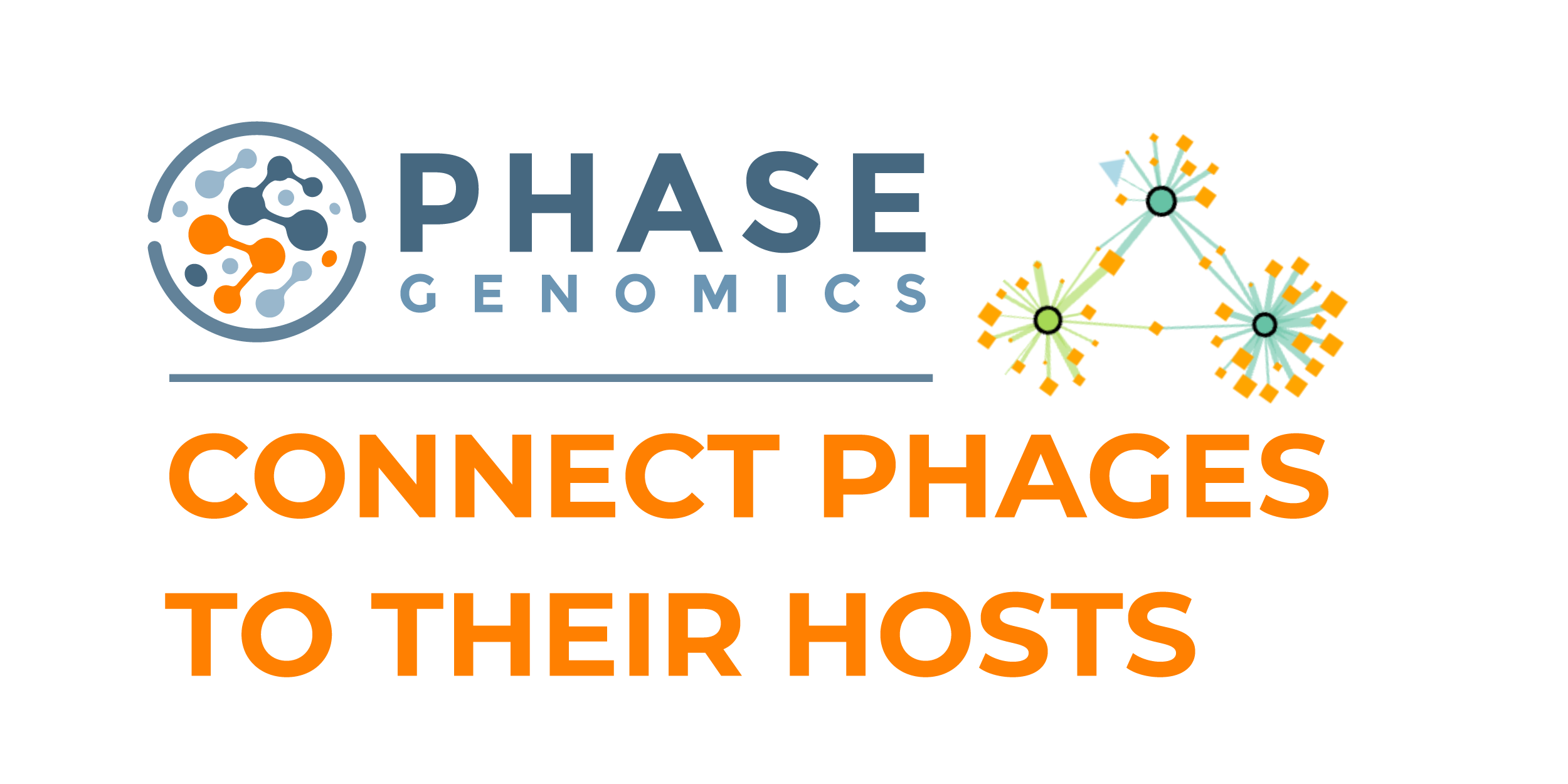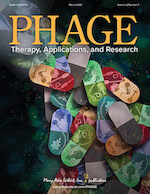“This feels just like the early days of the HIV crisis. People are dying, you’re not hearing about it. We need a group like ACT UP to bring this to the public. We’re not going to get phage therapy until people start demanding we have it.”
This week on the Podovirus Podcast, we talk to phage therapy patient advocate Chris Shaffer about how he fought for access to phage therapy to save his own life, and how it’s led him to advocate on behalf of other patients being told there’s “nothing left” for their infections.
He draws parallels between phage advocacy and 1980s AIDS activism, while sharing his successful treatment journey to Tbilisi, Georgia for phage therapy. He shares his vision for a patient-centered future where anyone, not just the well-connected or the lucky, can access phage therapy if it could help them.
A taste of what we discussed:
- First: Chris’ own clinical success: After two years of consistently high bacterial counts (>100,000 CFU) while on antibiotics, Chris saw his E. coli with ESBL infection completely eliminated after just three 20-day rounds of phage therapy at the Eliava in Tbilisi —with no side effects and sustained clearance 20 months later.
- Information barriers for patients: As Chris sees it, phage therapy still faces a three-part challenge: awareness (patients don’t hear about it), trust (patients aren’t sure it’s legitimate), and access (even informed patients struggle to find treatment)
- Medical education gap: An infectious disease intern Chris met from a prestigious US institution had never heard of phage therapy despite just completing medical training—underscoring the systemic nature of awareness barriers.
- Patient-to-patient networks: Before committing to treatment in Georgia, Chris needed to connect with another phage therapy patient (Pranav Johri) who had been through the process—highlighting how patients might solve the trust barrier for each other.
- Potential fundraising model: We discuss how small-scale patient fundraising networks could provide the modest funding needed for academic labs to prepare phage treatments for compassionate use cases, similar to Diane Shader-Smith’s fundraising and advocacy work on behalf of her daughter Mallory.
A few snippets from the episode…
On the communication challenge:
“Obstacle number one, you will not hear about phage therapy. It doesn’t matter what doctor you’re seeing in the United States, you’re not going to hear the word phage therapy… If you are able to get a compassionate use waiver to try phage therapy in the United States, the next obstacle is finding the phage. I didn’t know anybody. Who am I going to turn to to find a phage that’s going to work for my infection?”
On his own infection recovery:
“I woke up in the morning on the third round, the 12th day, and I walked into the bathroom to do my morning routine… I was looking at my weathered face and I said to myself, ‘It’s gone. It’s literally gone.’ I could tell. I didn’t need a test… I sat down on the edge of the tub and I started to cry. I literally did because I knew it was gone. And, sure enough, I finished that last round of phage. Two weeks later, I had a test. No sign whatsoever of E. coli, and it has remained that way ever since.”
On his unique advocacy position:
“I sit in a very unique place. I’m 67 years old, I’m retired, I have a pension. I don’t need any money. I don’t have to look for a job. I’m not doing this because I think I’m going to get some kind of job out of it… I can say exactly what I want to say. And not everybody has that freedom… I can’t wait until the day where they say Shaffer, nobody needs you anymore because phage is out there, everybody knows about it and everybody’s using it.”
What’s next for phage advocacy?
Chris envisions several pathways forward: establishing patient-funded compassionate use centers, better educating physicians starting in medical school, and creating clearer communication about the FDA’s stance on phage safety. He’s exploring the possibility of a Palm Springs treatment center that could serve as a model for patient access, and suggests developing small-scale fundraising networks to support research labs that make phage preparations for compassionate use. His approach balances respecting the scientific process while arguing that existing regulatory pathways could be better utilized for greater access.
We are so grateful to you Chris, for sharing your story with us here!
Listen to the full episode:
🎧 Spotify
📺 YouTube
Learn more:







